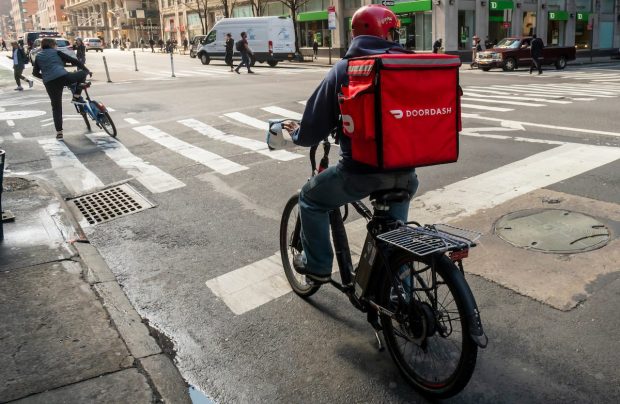NYC Raises Food Delivery Driver Minimum Wage in Ongoing Aggregator Tug-O’-War

As aggregators, consumers, gig drivers and restaurants alike struggle to make the economics of on-demand food delivery work out in their favor, New York City is throwing its weight behind drivers.
Per an announcement from NYC Mayor Eric Adams and from New York City Department of Consumer and Worker Protection (DCWP) Commissioner Vilda Vera Mayuga on Sunday (June 11), the city will raise the minimum hourly wage for “app-based restaurant delivery workers” to $17.96 beginning July 12 and raise it again to $19.96 on April 1, 2025. According to the mayor’s office, these workers currently average $7.09 an hour in the city.
“Our delivery workers have consistently delivered for us — now, we are delivering for them,” Adams said in a statement. “This new minimum pay rate, up by almost $13/hour, will guarantee these workers and their families can earn a living, access greater economic stability, and help keep our city’s legendary restaurant industry thriving.”
Unsurprisingly, restaurant aggregators are not happy with the decision. Take, for instance, DoorDash, the United States’ leading restaurant delivery app.
“The sad truth is that both the City Council and DCWP have chosen to ignore the unintended consequences this policy will cause, and how it will undermine the very delivery workers it seeks to support,” the aggregator stated in a blog post. “As we repeatedly made clear, to meet these new demands of such an extreme minimum pay rate, platforms like ours will have to increase costs on each order or reduce services in New York City.”
The move comes amid frequent ongoing dissatisfaction on all parties’ parts with the economics of third-party restaurant delivery, even as consumers continue to demand convenience and as many restaurants continue to be unable to afford to build out their own delivery networks.
Now, with ongoing inflation prompting many consumers to pull back on luxuries such as restaurant delivery, aggregators are feeling the burn. For instance, on Monday (June 12), Grubhub CEO Howard Migdal shared that the company is cutting its staff by about 15%, laying off around 400 workers.
“There is no doubt whatsoever that we have a solid foundation in place and an immense opportunity ahead of us — but it is also clear that we need to make some tough decisions in order to maintain our competitiveness, deliver the best possible service for diners and our other partners, and be successful for the long-term,” Migdal stated.
He cited the stiff competition in the industry and increases in staff and operating costs that outpaced growth as reasons for the decision.
Overall, many consumers continue to want restaurant delivery but are not willing or able to pay the high costs associated with the channel. According to data from PYMNTS’ study “Connected Dining: Rising Costs Push Consumers Toward Pickup,” which draws from a survey of more than 2,100 U.S. consumers, 48% of restaurant customers state that inflation has made them more likely to choose pickup over delivery.
Moreover, those who do order delivery expect discounts and lower prices. PYMNTS’ study “Connected Dining: Third-Party Restaurant Aggregators Keep the Young and Affluent Engaged reveals that 39% of aggregator customers say that they are motivated to use restaurant aggregators because their offers and discounts have gotten better, and 33% said the same because prices have become more accessible.

